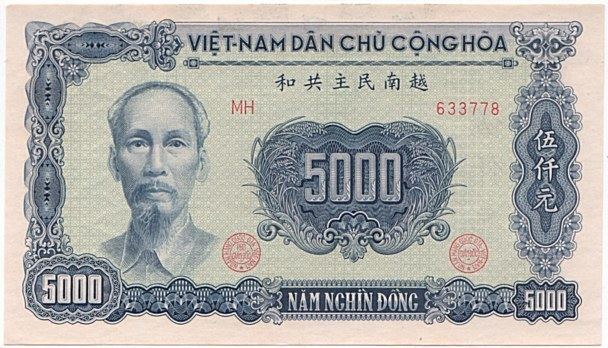1/10 hào Symbol ₫ | 1/100 xu Coins 1, 2, 5 xu | |
 | ||
Banknotes 2, 5 xu, 1, 2, 5 hào, 1, 2, 5, 10 đồng | ||
The đồng (/ˈdɒŋ/; [ɗôŋm]) was the currency of North Vietnam from 3 November 1946 to 2 May 1978. It was subdivided into 10 hào, each itself divided into 10 xu.
Contents
History
The first đồng issued by the communists controlling northern Vietnam was introduced on January 31, 1946, and replaced the French Indochinese piastre at par. Two revaluations followed. In 1951, the second đồng was introduced at a rate of 1 1951 đồng = 100 1946 đồng. However, some sources say there were two consecutive revaluations in 1951 and 1953, each with factor of 10. In 1954, this became the currency of the newly recognized state of North Vietnam, with an exchange rate to the still circulating piastre and South Vietnamese đồng of 32 northern đồng = 1 piastre or southern đồng. In 1956, the đồng was pegged to the Chinese renminbi yuan at a rate of 1.47 đồng = 1 yuan.
On 28 February 1959, another đồng replaced the second at a rate of 1 1959 đồng = 1000 1951 đồng. An exchange rate with the Soviet ruble was established in 1961, with 3.27 đồng = 1 ruble. On May 3, 1978, following the unification of Vietnam, the đồng was also unified. 1 new đồng = 1 northern đồng = 0.8 southern "liberation" đồng.
1946 đồng
In 1946, aluminium 20 xu, 5 hào and 1 đồng and bronze 2 đồng were issued, with the 20 xu coins dated 1945. These were the only coins issued for this currency, with no coins at all issued for the 1951 đồng.
1959 đồng
In 1958, holed, aluminium coins in denominations of 1, 2 and 5 xu were introduced. These were the only coins issued in this currency.
